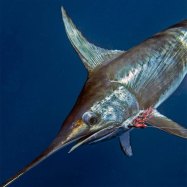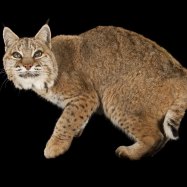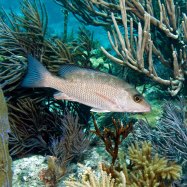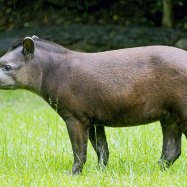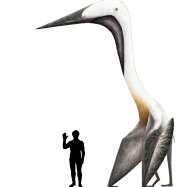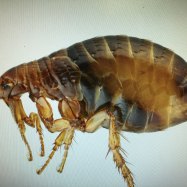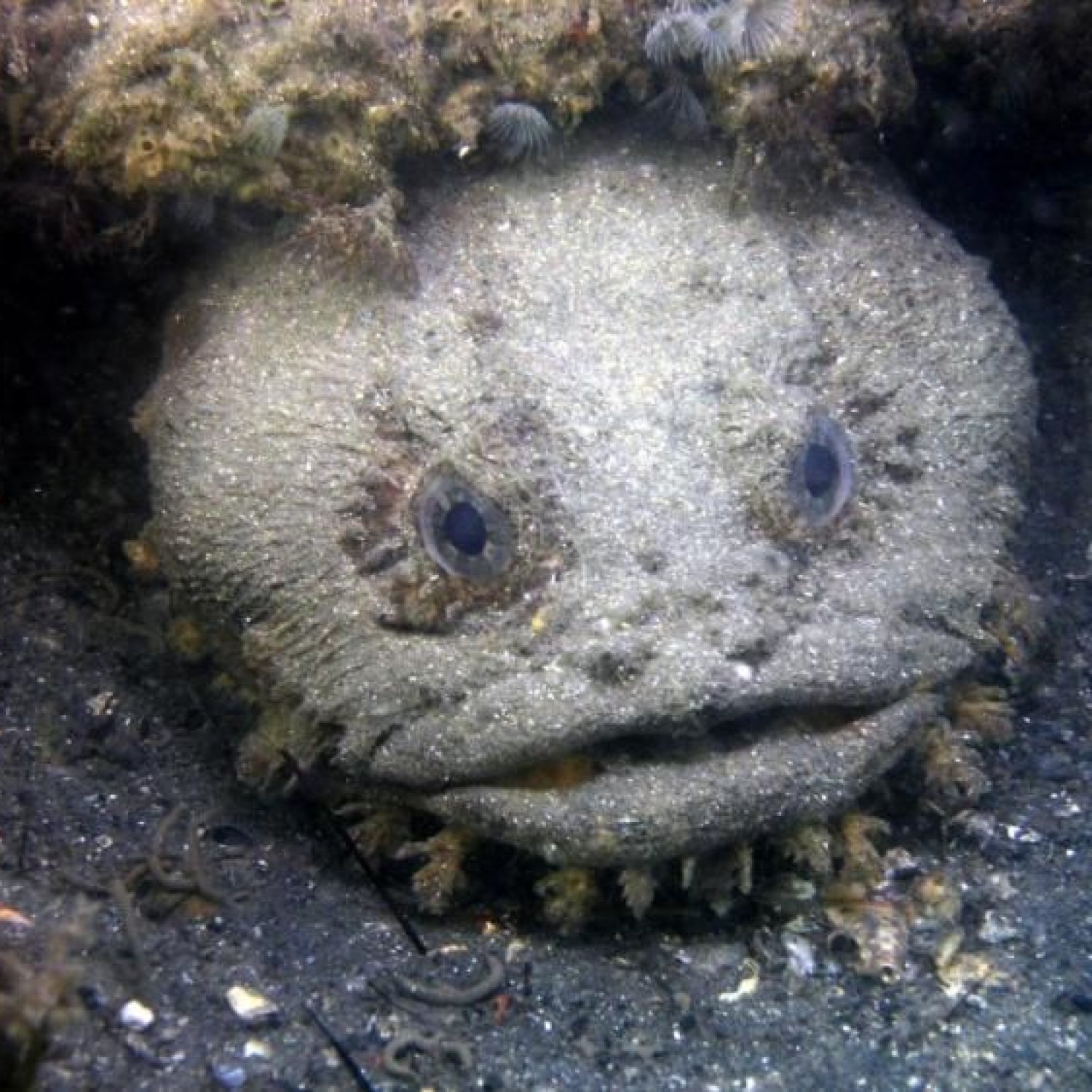
Oyster Toadfish
Up to 15 inches
Meet the Oyster Toadfish - a stout and broad-bodied fish that can grow up to 15 inches in length. Found in North America, this member of the Batrachoididae family is known for its unique ability to make grunting sounds. Keep an ear out for this interesting fish on your next seaside adventure!
Animal Details Summary:
Common Name: Oyster Toadfish
Kingdom: Animalia
Habitat: Coastal waters, estuaries, and bays
The Fascinating Oyster Toadfish: An Underappreciated Creature of the Atlantic
The ocean is a vast and mysterious world, filled with creatures both big and small. Some, like sharks, dolphins, and whales, capture our attention immediately with their impressive size and power. Others, however, may go unnoticed and underappreciated. One such creature is the Oyster Toadfish, also known by its scientific name Opsanus tau Oyster Toadfish. While it may not be the most attractive or well-known animal of the sea, the Oyster Toadfish has many fascinating characteristics that make it a unique and essential part of its ecosystem.An Animalia in the Sea
The Oyster Toadfish belongs to the Animalia Kingdom, the vast kingdom of multicellular organisms that includes all animals. They are part of the Phylum Chordata, which includes all animals with a notochord (the primitive backbone). Within the Chordata Phylum, Oyster Toadfish belongs to the Class Actinopterygii, commonly known as ray-finned fishes. This class includes 96.6% of all fish species, making it the largest group of vertebrates on Earth.A Unique Order and Family
The Oyster Toadfish is part of the Batrachoidiformes Order, which includes over 78 species of bottom-dwelling fishes. They, in turn, belong to the Batrachoididae family, also known as toadfishes. This family is primarily found in shallow coastal waters, estuaries, and bays around the world Ocean Whitefish.A Coastal Creature
Oyster Toadfish can be found in various locations, but their primary habitat is the coastal waters of the western Atlantic Ocean. They are commonly found in the waters of the United States, specifically in the North American region.Their preferred habitat includes rocky bottoms, coral reefs, and submerged structures, such as piers, jetties, and shipwrecks. They are also known to inhabit oyster beds, hence their name, and can be found in water depths of up to 100 feet. Due to their habitat preferences, they are often found in bays and estuaries, where the water is calmer and provides plenty of hiding spots.
A Carnivorous Diet
Oyster Toadfish are carnivorous creatures, which means they feed on other animals. Their diet mainly consists of crustaceans, such as crabs, clams, shrimp, and oysters, as well as small fishes and worms. They are opportunistic predators and will eat whatever they can find in their environment.A Stealthy Hunter
One of the most exciting features of Oyster Toadfish is their unique hunting technique. They have a highly specialized sensory organ called a "chin barbel" that they use to detect prey hiding in the sand or under rocks. This organ contains special taste buds that allow the toadfish to taste the water and locate its prey with incredible accuracy.Once the Oyster Toadfish has located its prey, it will open its large mouth, revealing rows of sharp teeth, and suck in its prey with lightning speed. These fish have powerful jaws that can exert up to 50 times their body weight in bite force, making them skilled hunters and a vital link in the ocean's food chain.
The Life of an Oyster Toadfish
The life cycle of an Oyster Toadfish is just as intriguing as its physical characteristics and hunting techniques. Like most fish, Oyster Toadfish begin their life as eggs that are laid by the female and fertilized by the male. The male then guards and cares for the eggs until they hatch, which usually takes about three weeks.Once hatched, the juveniles will stay in the male's territory and continue to be guarded and cared for until they are around four inches in length. At this point, they will leave their father's protection and venture out into the sea to fend for themselves.
Oyster Toadfish can live up to eight years in the wild, with females typically outliving males. During mating season, females will lay their eggs in the male's territory, and the process will begin again.
A Cryptic Creature
The Oyster Toadfish may not have bright colors or flashy fins, but it has evolved to have a unique and effective form of camouflage. Their brown or gray mottled coloration helps them blend in with their environment, making it difficult for predators to spot them.However, their camouflage is not just for protection, but also for hunting purposes. Oyster Toadfish will wait patiently for their prey to pass by, relying on their cryptic coloration to go unnoticed until it's too late for their unsuspecting victims.
A Stocky and Broad Body
Another characteristic that sets Oyster Toadfish apart from other fish is their stocky and broad body shape. They are not the swiftest or most agile swimmers, but their body shape is perfect for their habitat and hunting style. Their flat and broad head gives them the ability to wedge themselves into tight spaces, and their wide pectoral fins allow them to maneuver through their rocky environment with ease.An Underappreciated Creature
It's safe to say that Oyster Toadfish is not the most popular or well-known sea creature. They do not have the flashy appearance of tropical fish, nor are they as iconic as sharks or dolphins. However, these unassuming creatures play an essential role in their ecosystem and should not be overlooked or undervalued.Oyster Toadfish helps maintain the balance in the ocean's food chain by controlling the population of its prey, such as crabs and shellfish. They also provide a valuable food source for other predators, such as larger fish and seabirds.
The Threats Faced By Oyster Toadfish
Although Oyster Toadfish may not be the most recognized or sought-after fish, they still face various threats that endanger their population. One of the biggest threats is human activities, such as overfishing, pollution, and habitat destruction.Oyster Toadfish are often caught as bycatch in commercial fisheries, meaning they are caught unintentionally while targeting other species. This can lead to a decline in their population, which can negatively impact the ecosystem as a whole.
Additionally, pollution and habitat destruction can also have a severe impact on Oyster Toadfish. As bottom-dwellers, they are susceptible to pollution from sewage and runoff, which can harm their health and even lead to death. Destruction of their habitat can also leave them vulnerable and unable to find suitable shelter and resources to survive.
The Uncertain Future of Oyster Toadfish
As we continue to explore and exploit our oceans, the future of Oyster Toadfish remains uncertain. While they do not possess the same attraction or commercial value as other fish species, they play a vital role in maintaining the balance of their ecosystem. Without them, the delicate web of life in the ocean could unravel, causing a ripple effect on all marine life.To ensure the survival of Oyster Toadfish and other marine creatures, it is essential to educate ourselves and take action to protect our oceans. Simple acts like properly disposing of waste and reducing our carbon footprint can make a significant impact in preserving these valuable and fascinating creatures.
The Enigmatic Oyster Toadfish
In conclusion, the Oyster Toadfish may not be the most popular or aesthetically pleasing animal in the ocean, but it is undoubtedly one of the most enigmatic. From their unique hunting techniques and cryptic coloration to their vital role in the marine ecosystem, this unassuming creature deserves recognition and appreciation. Let us do our part in protecting and preserving this fascinating member of the Atlantic, to ensure its existence for generations to come.

Oyster Toadfish
Animal Details Oyster Toadfish - Scientific Name: Opsanus tau
- Category: Animals O
- Scientific Name: Opsanus tau
- Common Name: Oyster Toadfish
- Kingdom: Animalia
- Phylum: Chordata
- Class: Actinopterygii
- Order: Batrachoidiformes
- Family: Batrachoididae
- Habitat: Coastal waters, estuaries, and bays
- Feeding Method: Carnivorous
- Geographical Distribution: Western Atlantic Ocean
- Country of Origin: United States
- Location: North America
- Animal Coloration: Cryptic coloration, mottled brown or gray
- Body Shape: Stocky and broad
- Length: Up to 15 inches
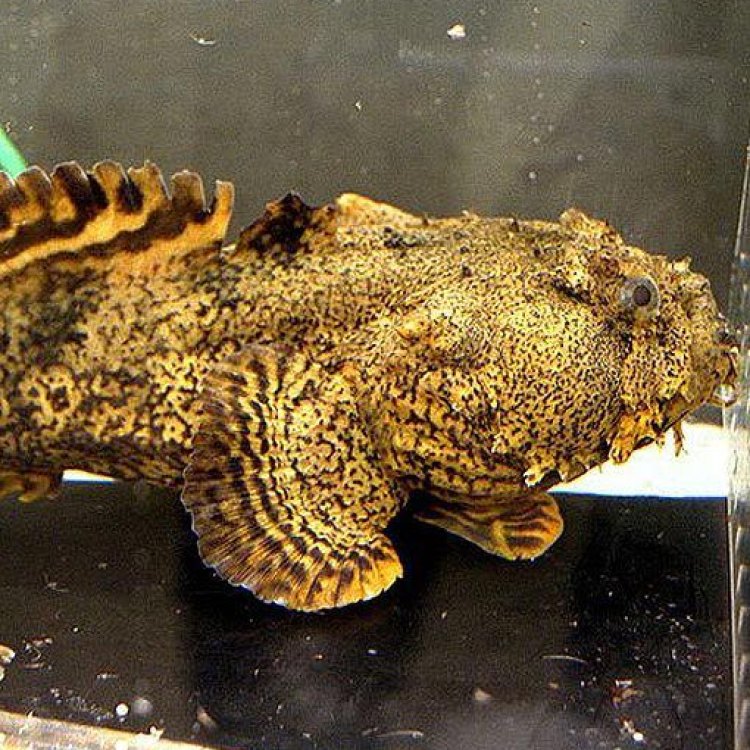
Oyster Toadfish
- Adult Size: Around 8 inches
- Average Lifespan: Up to 12 years
- Reproduction: Oviparous
- Reproductive Behavior: Male guards the nest of eggs
- Sound or Call: Produces a grunting sound
- Migration Pattern: Non-migratory
- Social Groups: Solitary
- Behavior: Nocturnal
- Threats: Habitat destruction, pollution, overfishing
- Conservation Status: Least Concern
- Impact on Ecosystem: Keystone species in maintaining oyster populations
- Human Use: Occasionally used as bait for fishing
- Distinctive Features: Large mouth, threat display by inflating the body
- Interesting Facts: Can survive in low-oxygen environments by breathing through their skin and mouth
- Predator: Predated upon by larger fish and birds
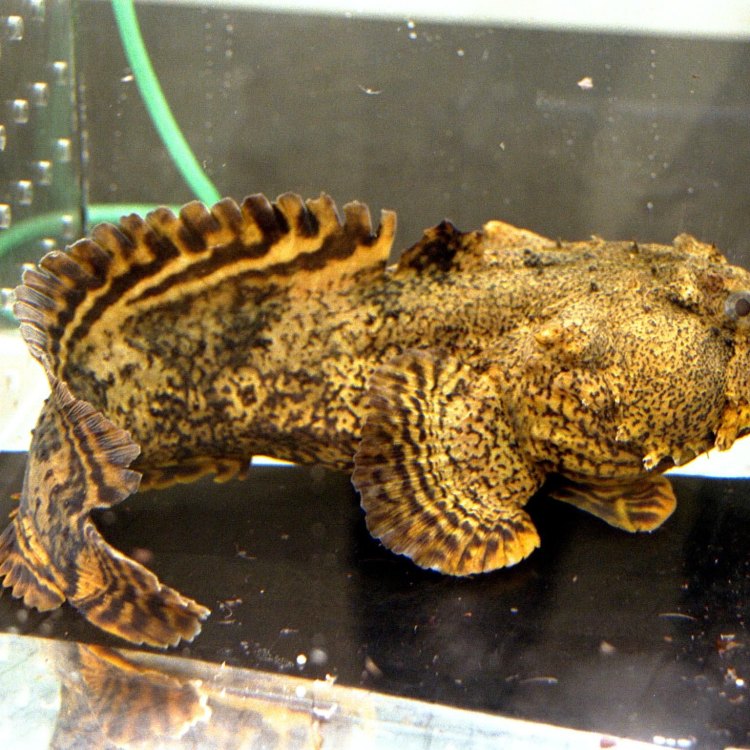
Opsanus tau
The Oyster Toadfish: A Fascinating Creature of the Sea
When one thinks of the ocean, images of vibrant coral reefs, exotic fish, and dazzling dolphins often come to mind. Rarely does one consider the toadfish, a creature mainly found in the Atlantic Ocean and known for its distinct appearance and behavior. However, the oyster toadfish (Opsanus tau) is a fascinating and unique species that deserves recognition for its role in the ocean's ecosystem.The oyster toadfish, also known as the ugly toad or the oyster cracker, is a small fish that can grow up to eight inches in length PeaceOfAnimals.Com. They have a large, flattened head with a wide mouth, sharp teeth, and a wide body with a tapered tail. They have a mottled brown or gray color, making them excellent at blending into rocky and sandy bottoms where they reside. While not the most attractive creature in the sea, the oyster toadfish is an essential part of the ecosystem.
Native to the Atlantic coast of North America from Nova Scotia to the Gulf of Mexico, this fish species has been spotted in the waters from as far north as Nova Scotia to as far south as the Gulf of Mexico. They are commonly found in coastal bays, estuaries, and shallow reefs, with a preference for areas with a lot of rocks and oyster beds.
The average lifespan of an oyster toadfish is around 12 years. They reach sexual maturity at around three years of age, with females being larger than males. However, the size difference between males and females is not the most unique thing about their reproductive behavior.
Unlike many other fish species, oyster toadfish are oviparous, meaning they lay eggs Old English Sheepdog. Female oyster toadfish lay their eggs in clusters, attaching them to hard surfaces such as rocks, shells, and debris. Once the eggs are laid, they are guarded by the male, who will fiercely protect them from predators. This behavior of the male guarding the nest is known as paternal care and is essential in ensuring the survival of the eggs.
But it's not just the reproductive behavior of the oyster toadfish that makes them stand out. These nocturnal creatures are also known for their distinct vocalizations. Unlike most fish that communicate through visual cues or vibrations, oyster toadfish produce a loud grunting sound, usually heard during their mating season in the spring and summer. These grunts are created by contracting their swim bladder muscles, and the sound can travel up to 100 feet underwater. It is believed that these vocalizations serve as a mating call for females and a territorial warning for other males.
With their solitary social groups and nocturnal behavior, oyster toadfish may not be the most sociable sea creatures. However, they play a vital role in the ocean's ecosystem as a keystone species. A keystone species is an organism that has a significant impact on the community or ecosystem; if removed, the ecosystem's structure would drastically change. Oyster toadfish are considered as a keystone species because they help to maintain the population of oysters, which are crucial to the ocean's health and biodiversity.
Oysters are vital to marine ecosystems as they act as natural filters, keeping the water clean and healthy. They also provide a habitat for many other marine life, including fish, crabs, and other shellfish. Oyster toadfish feed on mussels, clams, and other bivalves, which helps to prevent overpopulation and ensures the survival of other marine species that depend on oysters.
Unfortunately, oyster toadfish face numerous threats that affect their population size and, ultimately, their role in the ocean's ecosystem. Habitat destruction, pollution, and overfishing are the main contributors to the decline of this species. Coastal development and dredging can destroy their preferred rocky and sandy habitats, leaving them with nowhere to hide or reproduce. Pollution, especially from plastic waste and oil spills, can harm oyster toadfish directly or contaminate their food sources. Overfishing is also a significant threat, with the oyster toadfish mistakenly caught in traps and nets, often resulting in their death.
Despite these threats, the oyster toadfish's conservation status is currently listed as "least concern" on the IUCN Red List. This classification may be attributed to their resilience and adaptability to various environmental changes. However, to ensure their survival and preserve their crucial role in the ecosystem, conservation measures must be taken to protect their habitats and control the impact of human activities on their population.
Human use of oyster toadfish is primarily limited to being used as bait for fishing. However, their unique appearance and vocalizations have also made them popular in aquariums. Some fishermen also use them as indicators of oyster beds' health, as the presence of oyster toadfish indicates a healthy population of oysters. They are not considered a commercially significant species, but their role in maintaining the oyster population and promoting a healthy ocean cannot be overlooked.
Apart from their significant role in the ecosystem, oyster toadfish are also known for their distinctive features and interesting facts. As mentioned earlier, they have a large mouth that can extend to engulf prey larger than themselves. They can also inflate their body as a threat display, making them appear more significant to potential predators.
But one of the most fascinating facts about oyster toadfish is their ability to survive in low-oxygen environments. Being a bottom-dwelling fish, they often encounter areas with low oxygen levels. To survive, they have adapted by breathing through their skin and mouth. This adaptation is possible due to their highly vascularized mouth tissue, which allows for efficient gas exchange.
While they may be predated upon by larger fish and birds, oyster toadfish have managed to thrive in their niche and play a crucial role in their ecosystem. They may not be the most glamorous creatures in the sea, but their unique characteristics and behavior make them a fascinating and valuable species. As we continue to learn more about our ocean's inhabitants, let us not overlook the unassuming but significant oyster toadfish.

The Fascinating Oyster Toadfish: An Underappreciated Creature of the Atlantic
Disclaimer: The content provided is for informational purposes only. We cannot guarantee the accuracy of the information on this page 100%. All information provided here may change without prior notice.

